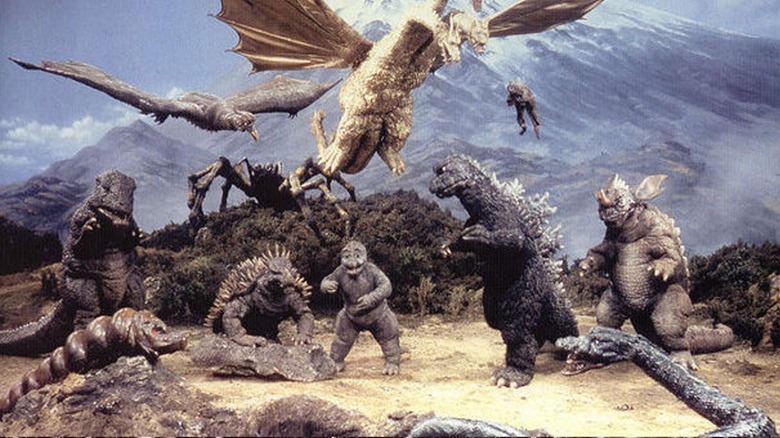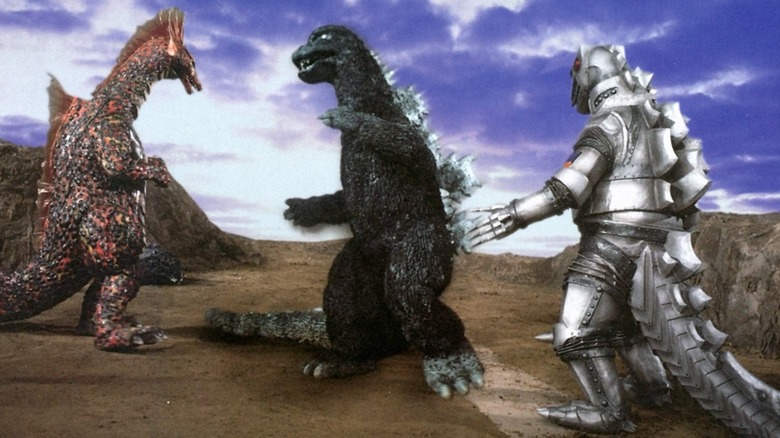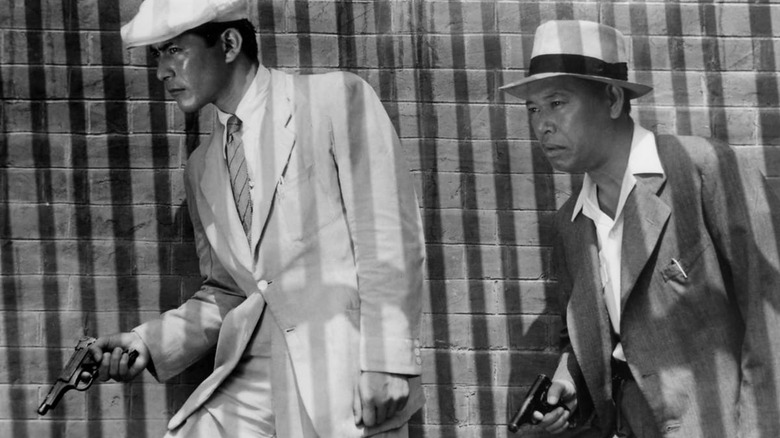How Akira Kurosawa Revived The Career Of The Director Of Godzilla
Ishiro Honda's 1968 classic "Destroy All Monsters" was the ninth film in the Godzilla film series, and, in a way, marked the end of an era. Since 1954 — when Honda's "Gojira" debuted the monster — Godzilla films had been pretty successful, and over the course of 14 years, the monsters had become increasingly elaborate and plentiful. "Destroy All Monsters" featured the greatest number of monsters yet, as Godzilla and numerous monster allies — Mothra! Rodan! Anguirus! Baragon! Kumonga! Minilla! Manda! Varan! — would team up to fight the wicked extraterrestrial three-headed dragon King Ghidorah. The mayhem was magical.
According to a history penned by Steve Ryfle for the Criterion Collection in 2019, the Godzilla series was about to contract. The rising popularity of television in Japan in the late 1960s saw Toho — and indeed the Japanese film industry at large — slashing budgets to even their most popular tentpoles. It would only be the next year that Honda would make the lackluster "All Monsters Attack," a cheap Saturday matinee version of Godzilla. In that film, a human child would converse — in words — with a human-sized Minilla, and the two would witness Godzilla fighting a monster called Gabara. Although only running 69 minutes, "All Monsters Attack" would be padded out by multiple clips from older Godzilla movies. It was clear that budgets and ambitions for the series plummeted.
Honda retires
The Godzilla series was also dealt a blow in 1970 when Eiji Tsuburaya, the inventor of most of the series special monster effects, passed away. The Godzilla series was, it might be said, somewhat adrift after that. The 1970s saw some of the weirder entries in the Godzilla series, including Yoshimitu Banno's 1971 film "Godzilla vs. Hedorah," who was a smog monster, and Jun Fukuda's "Godzilla vs. Megalon" from 1973. That was the one with Jet Jaguar.
Honda would recede from Godzilla movies during this time. He would return to directing for 1975's "Terror of Mechagodzilla," a fine film in its own right. But while that film did possess some of the glorious monster charms from the heyday of the series, it would mark Honda's final film as director, and the final film in the Showa Godzilla era. There wouldn't be another Godzilla film until 1984 when the series was rebooted and the Heisei era began.
After his retirement, Akira Kurosawa of all people would more closely befriend Honda.
The 1970s, as detailed in "Something Like an Autobiography," weren't a great time for Kurosawa. Kurosawa hadn't made a film since 1965's "Red Beard," and he was looking to experiment. Infamously, his first color feature, "Dodes'ka-den" tanked at the box office — after Kurosawa mortgaged his house to pay for it — and it threw the director into a severe depression that led to a suicide attempt. It wouldn't be until Kurosawa made "Dersu Uzala" in 1975 that he would find himself on the road to recovery.
One day on a golf course in the late 1970s, Honda and Kurosawa reacquainted themselves. They not only became fast friends and confidants, but regular working partners.
If you or anyone you know is having suicidal thoughts, please call the National Suicide Prevention Lifeline by dialing 988 or by calling 1-800-273-TALK (8255).
Honda and Kurosawa
Honda and Kurosawa were hardly strangers. The two men, early in their careers, became friends when working as second unit co-directors in the 1930s on such films as "A Husband's Chastity" (1937) and "Enoken's Chakiri Kinta Part 2" (1938). Over a decade later, Honda would be hired as assistant director on 1949's "Stray Dog," Kurosawa's sweaty noir film. Throughout the ensuing three decades, however, the directors would work separately, with Kurosawa making many of his more indelible classics, and Honda making world-changing kaiju movies and TV shows.
Kurosawa would work with other Godzilla luminaries as well. Banno, the director of "Godzilla vs. Hedorah" was Kurosawa's assistant director on the Macbeth-like "Throne of Blood," "The Lower Depths," the beloved "The Hidden Fortress," and the Hamlet-like "The Bad Sleep Well." Godzilla and Kurosawa were never far apart.
Upon their reunification on that golf course, however, Honda would be convinced to continue to work with his friend, and he wad hired to work on Kurosawa's five remaining movies. Honda would serve as a second unit director and production coordinator on "Kagemusha" in 1980, and as "director counselor" on 1985's "Ran." According to Ryfle's essay, the two were close to the point of being confidants. Honda would also work in various capacities on the "Dreams" (1990), "Rhapsody in August" (1991), and "Madadayo" (1993).
On "Madadayo," Honda would serve as an uncredited co-director, which would also be Honda's final production since he passed away from lung cancer that same year. He was 81. Kurosawa read the eulogy at his friend and collaborator's funeral; Kurosawa would also make no additional films after "Madadayo," and passed away in 1998 at the age of 88.
26 of Kurosawa's films are part of the Criterion Collection. 23 of Honda's are.


